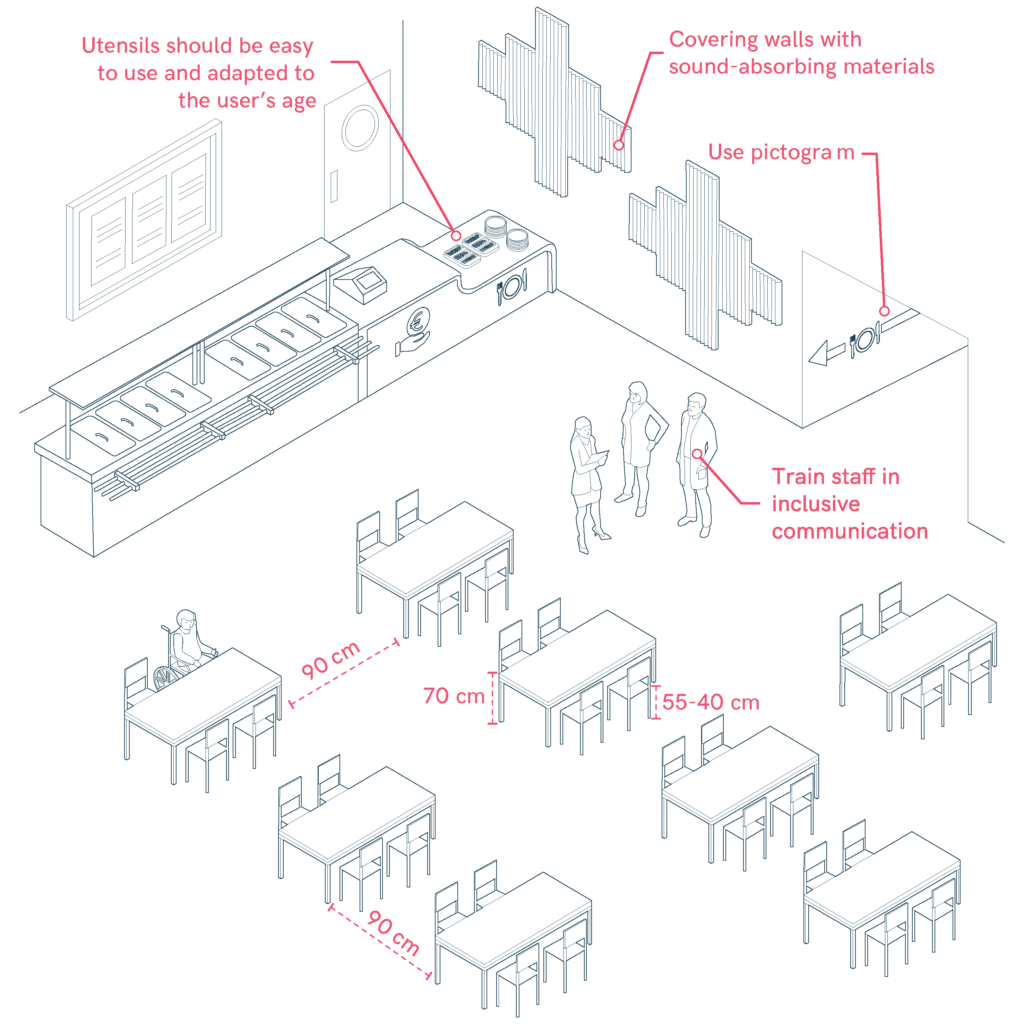Dining Room in Schools
An inclusive dining environment ensures that everyone can eat comfortably. Signage, acoustics, and appropriate furniture play an essential role. To make the dining area accessible to all, clear signage with pictograms should be used to identify spaces and utensils. Staff should be trained to communicate effectively with individuals with disabilities, and sound-absorbing materials should be applied to walls to reduce noise levels. By following these guidelines, an inclusive and welcoming dining area can be created for all.

- Accessible Signage and Communication
– Use pictogram-based signage for identification. – Pictogram signs are essential for identifying spaces and utensils. – Train staff in inclusive communication. – Dining staff should be trained to facilitate communication with people with disabilities. - Acoustic Conditions
– The dining room’s acoustics should be improved by covering walls with sound-absorbing materials to reduce vibrations and echoes. – Apply sound-absorbing materials to reduce noise levels. - Physical Accessibility and Furniture
– There should be adequate spacing between tables (at least 90 cm) to allow wheelchair access. – Tables should be low, with no crossbars underneath: 70 cm in height. – Chairs should be between 40 cm and 55 cm in height. - Adapted Utensils: Utensils should be easy to use and adapted to the user’s age and ability, e.g., blunt knives for younger students and sharper knives for older students.
- Inclusive and Nutritious Menus
– Offer menus with different alternatives for users with allergies, food restrictions or cultural diets. – Poverty and access to school meals in some areas are a significant problem. Local governments must be able to ensure nutrient-dense and healthy menus.
Sources
- https://accessible-eu-centre.ec.europa.eu/content-corner/digital-library/en-172102021-accessibility-and-usability-built-environment-functional-requirements_en
- https://www.miteco.gob.es/fr/ceneam/recursos/materiales/guia-diseno-entornos-escolares.html
- https://www.codigotecnico.org/pdf/Documentos/SUA/DccSUA.pdf
- https://www.cocemfe.es/wp-content/uploads/2020/02/Guia-basica-accesibilidad-centros-educativos.pdf
- https://www.oficinadeaccesibilidaduniversal.es/doc/educativa/centros-educativos/Accesibilidad%20cognitiva%20en%20centros%20educativos.pdf
- https://afaunamuno.org/wp-content/uploads/2023/02/Criterios-Intervencion-EE-30Mar_22.pdf
